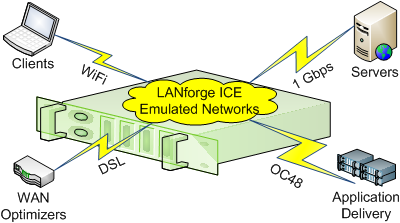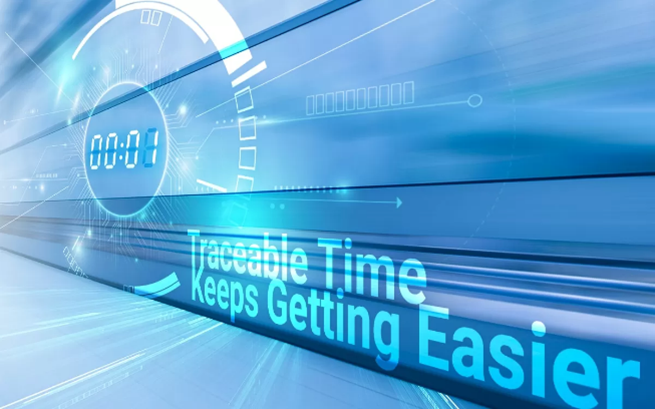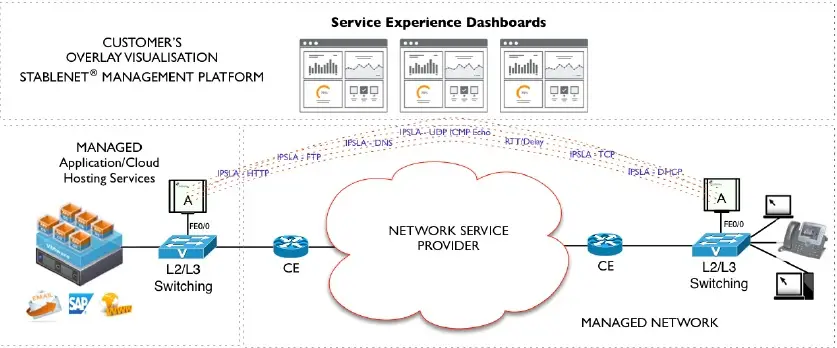Time is more than just a measure of seconds. It underpins the financial markets, telecommunications, cybersecurity, and every sector that depends on accurate synchronization of people, data or activities.
As the need for ultra-precise time grows and more and more technology services are migrated to cloud environments, businesses are moving beyond traditional GPS/GNSS-based timing systems toward resilient, software-driven solutions. These solutions are commonly referred to Terrestrial Timing solutions. At the forefront of this transformation is Hoptroff with its Traceable Time as a Service (TTaaS) solutions.
Who is Hoptroff?
Hoptroff was founded in London in 2010 by physicist and time pioneer Richard Hoptroff , initially developing smart mechanical watches and supplying watch movements to the industry. In 2015, the company pivoted to focus on time synchronization with a vision of eliminating complex hardware and enabling plug-and-play access to secure, traceable time from a global network of atomic-clock-equipped hubs in London, New York, Tokyo, and beyond.
Today, supported by a global network of timing centers and certified to ISO 27001 and ISO 9001, Hoptroff delivers trusted time solutions globally across finance, media, gaming, and telecommunications, helping organizations maintain compliance and operational integrity.
From Hardware to Service
Traditionally, precision timekeeping relied on specialized hardware like atomic clocks and GNSS receivers. While accurate, these systems posed challenges: GNSS signals were vulnerable to jamming or spoofing, and atomic clocks required high costs, controlled environments, and ongoing upkeep.
The growing demand for microsecond-level accuracy in industries such as finance, telecom, and cloud computing has highlighted the need for a more resilient and accessible alternative. Organizations require solutions that are not only precise, but also cost-effective and flexible enough to adapt to evolving digital infrastructure and hardware abstracted deployment patterns.
Hoptroff has answered this need with Traceable Time as a Service (TTaaS). Delivered over secure networks, TTaaS provides ultra-precise, traceable, and compliant time without a need for timing hardware. Supported by a global network of timing centers, it ensures continuous access to trusted time, helping organizations stay efficient, secure, and compliant.
What is Traceable Time as a Service (TTaaS)?
Traceable Time as a Service (TTaaS) gives organizations direct access to globally synchronized and legally traceable time through a distributed network of precision time sources. By delivering this service over resilient fiber and data networks, TTaaS removes dependence on satellite-based systems, which are vulnerable to interference, jamming, or spoofing. This shift not only reduces exposure to external threats but also eliminates the complexity and cost of maintaining specialized on-premises hardware such as atomic clocks or GNSS receivers.
For industries such as finance, broadcasting, and cybersecurity, where nanosecond-level accuracy is essential, TTaaS helps these organizations meet stringent regulatory requirements from financial transaction timestamping to compliance with data integrity standards. More importantly, it enhances operational resilience by ensuring that even in the event of GNSS outages or cyberattacks, businesses continue to operate with uninterrupted access to precise and verifiable time.
By treating time as a networked utility, TTaaS represents a fundamental shift in how organizations think about synchronization. Instead of viewing precision timekeeping as a hardware problem to solve, businesses can now rely on a continuous, centrally managed service that scales with their needs. This model not only improves efficiency and security but also future-proofs operations in an era where digital infrastructure is increasingly distributed and timing accuracy has never been more critical.
The Benefits of TTaaS
Resilience – Unlike GNSS/GPS-based systems TTaaS delivers time through resilient terrestrial networks. This independence from satellite signals ensures organizations maintain accurate and continuous synchronization even in the face of cyber or environmental disruptions targeting the GPS/GNSS systems and receivers.
Scalability – Because TTaaS is delivered over secure fiber and data networks, it can be deployed quickly across multiple sites and geographies without the need for expensive, localized infrastructure. As organizations expand, they can scale access to precise time seamlessly, making it ideal for global enterprises with distributed operations.
Compliance – TTaaS is designed to meet the strict timing and audit requirements set by financial regulators and industry standards bodies. With legally traceable time, organizations can demonstrate transparency and accuracy in their operations, ensuring they remain compliant while avoiding costly penalties or reputational risks.
Simplicity – By moving from hardware-based systems to a managed service model, TTaaS removes the burden of owning, maintaining, and upgrading specialized equipment. This simplifies time synchronization to a utility-like service, allowing organizations to focus on their core business while relying on experts to deliver trusted, compliant time.
The Future of Precision Time
As industries continue to digitize, the demand for secure, accurate, and scalable time services will only increase. Hoptroff’s TTaaS model represents a fundamental shift in how time synchronization is delivered, moving away from hardware to resilient, software-driven services.
By ensuring accuracy, compliance, and resilience, Hoptroff is redefining how businesses think about one of their most critical assets: time.
If TTaaS is something you are interested in looking into, contact our sales team today for more information and a free consultation.








